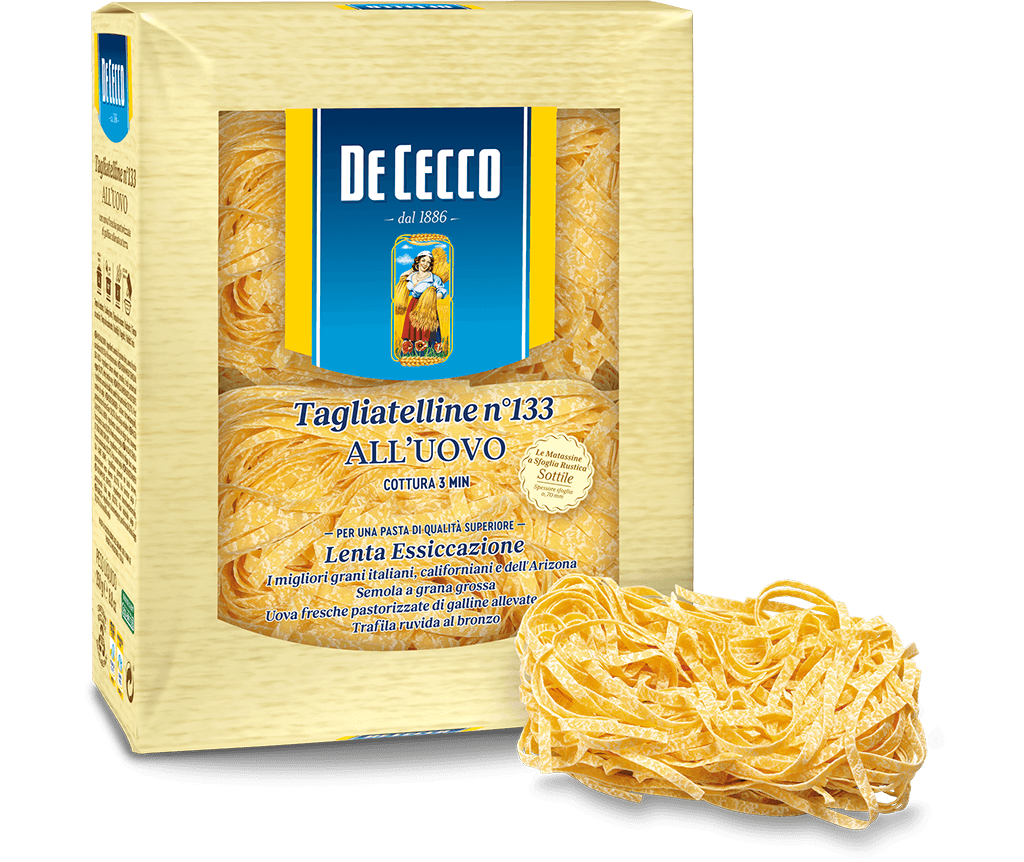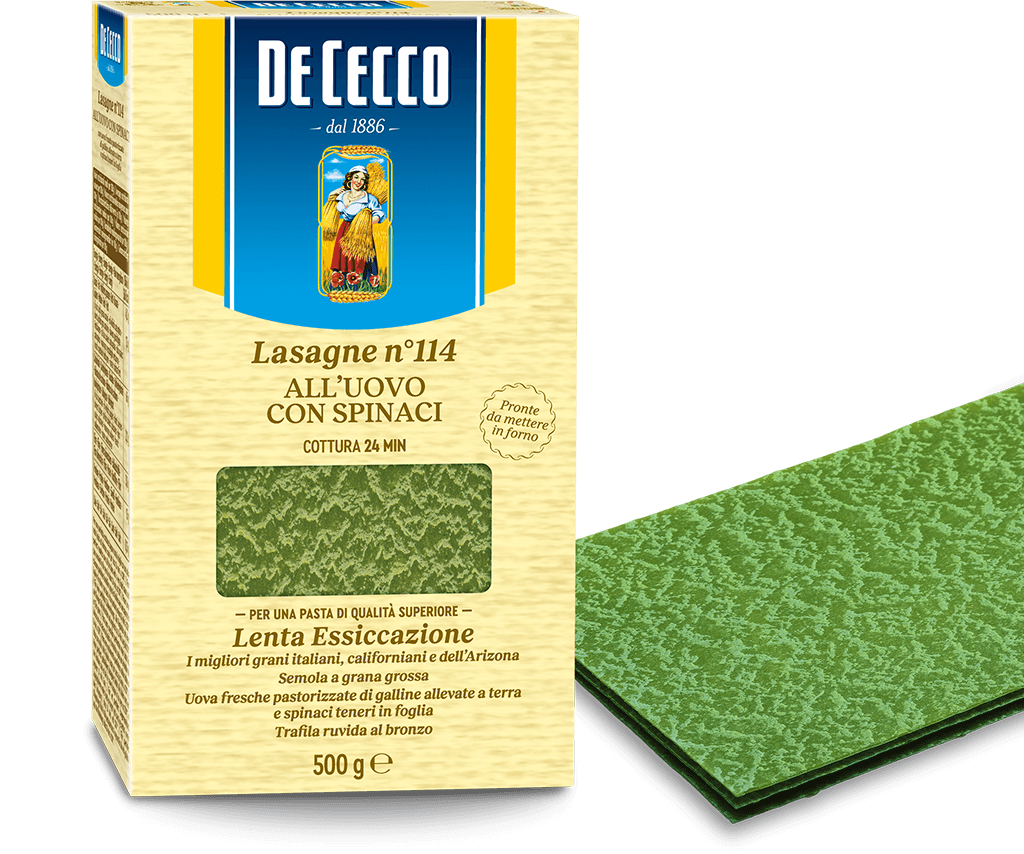Lasagne n° 114 all'uovo con spinaci
Lasagna is one of the oldest forms of pasta recorded. It probably corresponds to the Latin "Lagana" (which in turn was derived from the Greek "laganon": large, flat sheet of pasta cut into strips) and it began to be known as "Lasagna" probably after the year 1000 AD. The first traces of the widespread use of the term "Lasagna" can be found in the works of the most renowned 12th century Italian poets. "Granel di pepe vince / per virtù la lasagna", (a peppercorn beats lasagna for virtue) states Jacopone da Todi. Cecco Angiolieri,on the other hand, warns his readers, "chi de l'altrui farina fa lasagne / il su' castello non ha ne muro ne fosso" (He who makes lasagna with another's flour / his castle will have no walls or moat).
Lasagna all'uovo con spinaci, a tasty variation of the classic Lasagna all'uovo, is made with the addition of tender spinach leaves to produce fragrant, imaginative dishes packed with flavour.
It has long been one of the most well-known and popular types of pasta in Italian cooking and the simplest and most popular recipe calls for a ragù, béchamel and parmesan whereas mozzarella has also been introduced more recently.
Delicious "white" versions are also quite commonplace with sauces made from mushrooms and vegetables.
Available in 500g pack.s
- Cooking time: 24 min
Our method
Attention, care, experience, quality at every stage: from our mill to your table.
Tagliatelline n° 133 all'uovo






